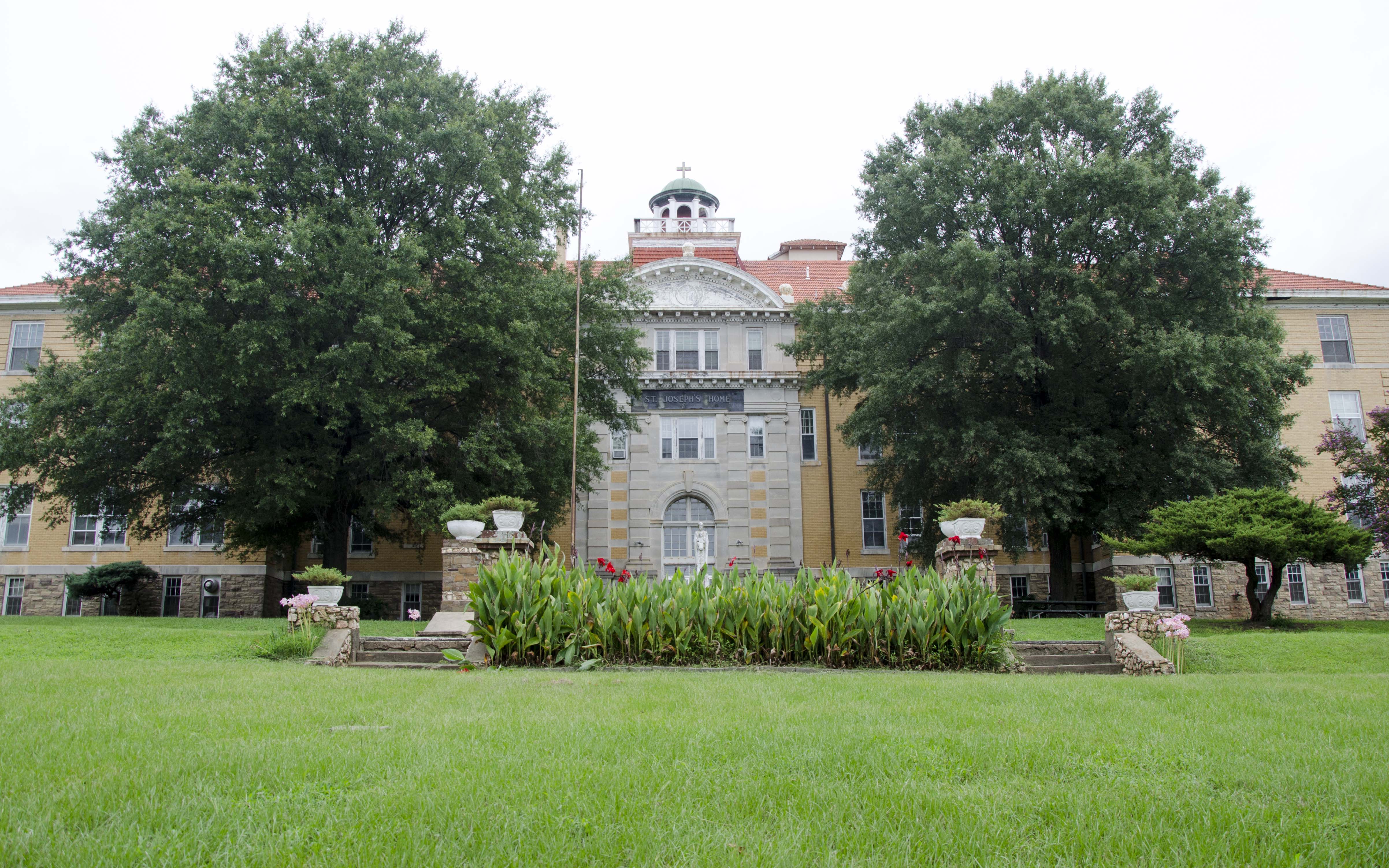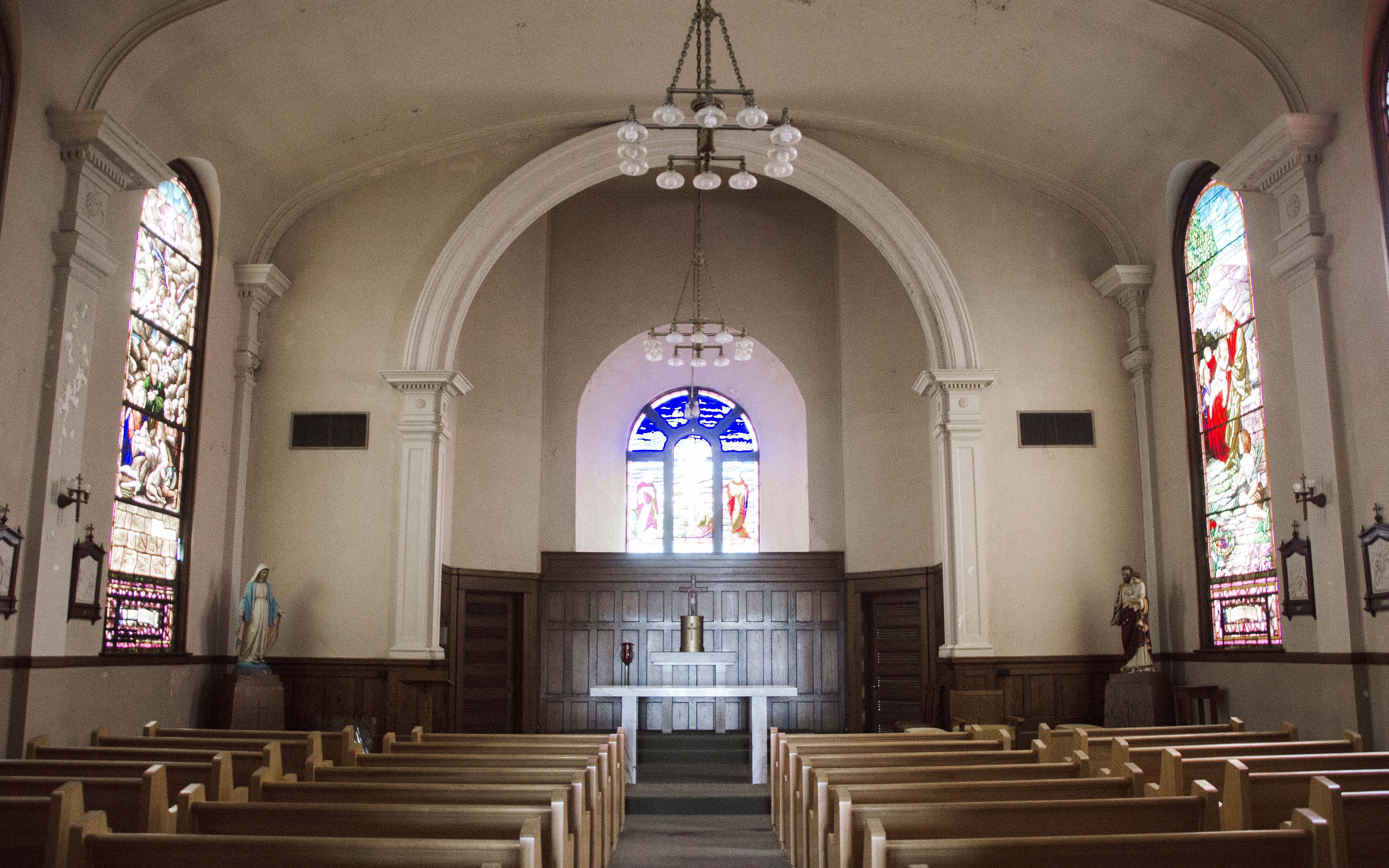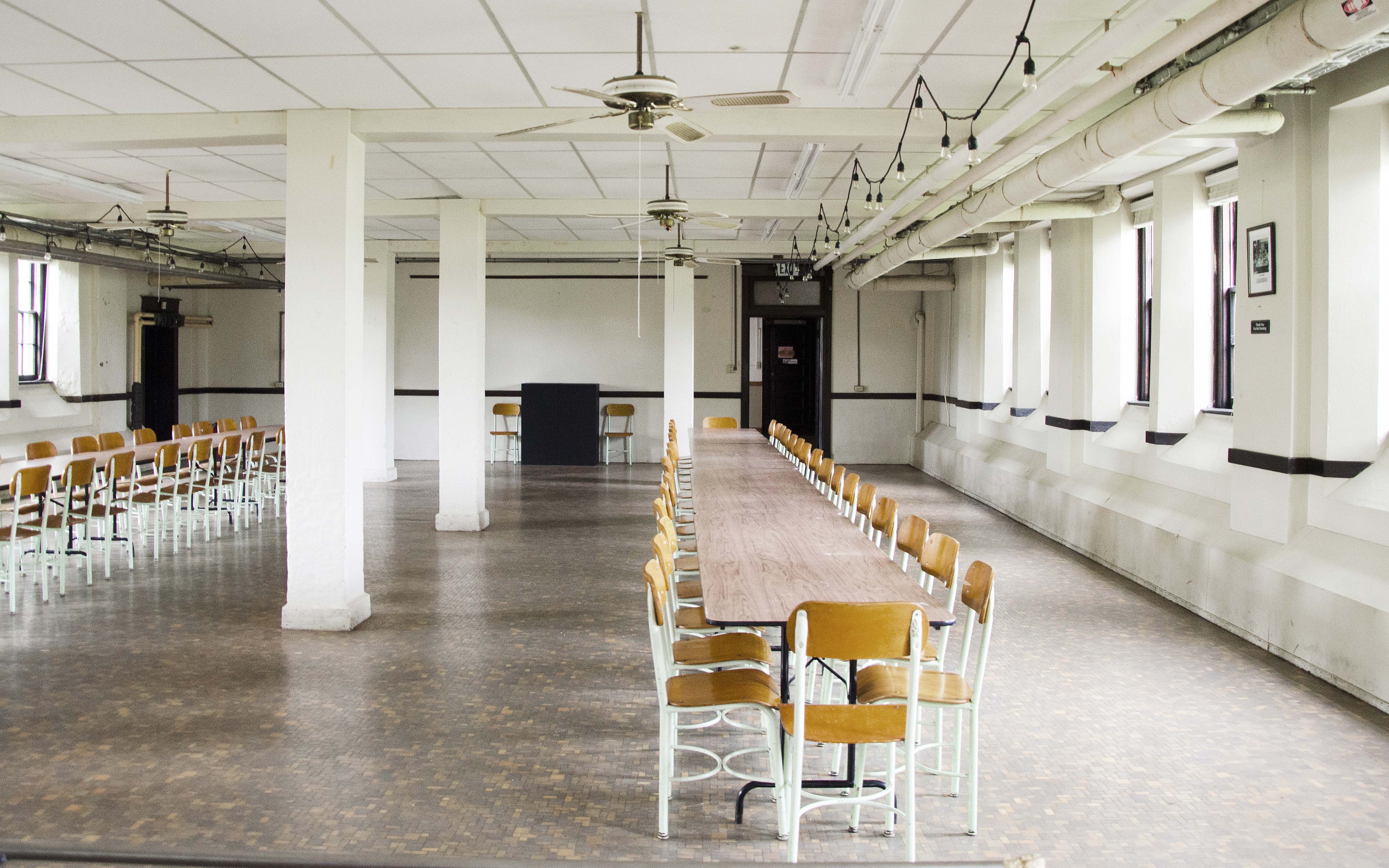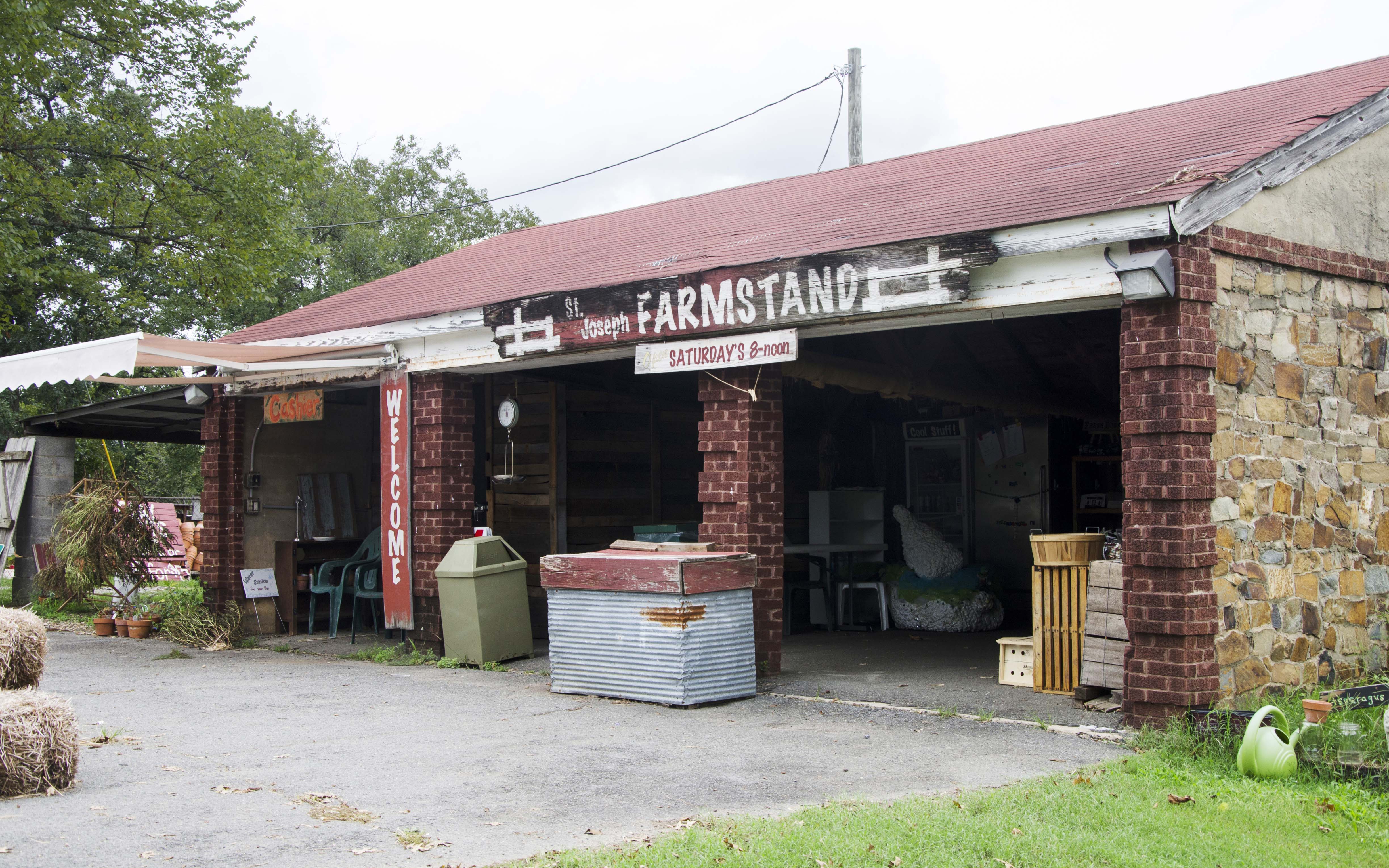Hidden histories: St. Joseph Center of Arkansas
September 17-23, 2018
By Becca Bona
Standing on the 63-acre grounds at St. Joseph Center of Arkansas, you feel as if you’re hours away from the city. Truth be told, the serene landscape is only an eight-minute drive from North Little Rock’s downtown Argenta.
Sandy DeCoursey, Executive Director of the Center stands near the (relatively new) Farm Stand, admiring the flowers adorning the southwest corner of the building.
The building has an interesting history and has served a multitude of purposes during its lifetime thus far.
“St. Joseph Home officially closed in the late 2007 time frame,” DeCoursey explains, “The owners of the property – the Catholic Diocese of Little Rock – took a long hard look at the bottom line and just could not justify the fiscal responsibility of keeping this place. That’s when an announcement was made early 2008 that the property would be sold.”
Thankfully there was a little caveat stating that if a group would come forward with some solid ideas for the future, the Diocese would consider keeping it.
The history: from orphanage to hotel to daycare
Originally constructed in 1908, the beautiful building was always meant to be an orphanage, commissioned by Bishop Morris of the Catholic Diocese. Charles S. Thompson, a local architect well-known for his work, designed the building in the style of an Italian villa. A bit of that old-world charm remains today.
The 56,00 square-foot building includes eighty rooms, an attic, and a basement. Paired with the 720-acres, the property was brimming with life from self-sustaining orchards to livestock. Some 300 orphans were housed in the building by 1914, but World War I interrupted the trajectory.
“Bishop Morris and his contemporaries got a group together to put a pitch for North Little Rock as a site for a military base,” DeCoursey recounts. The pitch was a success and everything moved quickly, so much so that St. Joseph was needed, as well.
“In order to house the officers and folks that would be coming on board to build out Camp Pike, there was a deal struck to take over the building as the Belmont Hotel.”
The sisters and the orphans were relocated, and from 1917 to 1921 the building was the Belmont Hotel, which consisted of a community that trickled over from Camp Pike (now Camp Joseph T. Robinson).
Some time after the conclusion of the war – 1921 to be exact – the sisters and orphans moved back in, although the acreage was substantially reduced.
“I’m not exactly sure of the acreage that was returned to them in 1921, but today we stand at 63 acres,” says DeCoursey.
Upon their return, the sisters continued operating the orphanage, and maintained an extensive farm, rose garden, fruit orchard, and even raised Holstein cows and hogs. In 1978, the orphanage closed, but in 1979 the sisters opened a daycare. It ran successfully until 1997, as the rise of pre-kindergartens made it nearly impossible for them to compete.
The journey to restoration
After a group came forward in 2008 willing to help restore the Center to its glory days, a nonprofit was formed – St. Joseph Center of Arkansas, Inc. In 2010, this same group signed a 50-year lease from the Diocese to take over all fiscal management of the property and, as DeCoursey says, “We have been hard at it ever since to try to find that elusive fit of income producing and community outreach.”
After ten years of work, the nonprofit – which has restructured and reorganized itself along the way – has finally gotten a bit closer to discovering the right mix of programs to offer and directions to take.
“We feel like we’re really on the right track now with farming,” says DeCoursey, “we are able to sustain operations with the income from our farming operations.”
Finding that path took some time, however, Take for instance, the community garden arm – which although is not profit-producing, is community-building. The area was designated for use by a nearby low-income retirement center – Christopher’s Homes.
“When we started we only had one taker, believe it or not, but he came out with a fervor and developed that whole little area, so much so that the next year he wanted a little more, and the next year he asked for little more,” DeCoursey recalls. “That was the first gardening effort here.”
As time went on the Center expanded operations through grants funds and today there are 35 beds available for community members to rent.
“We’ve had a waiting list since we started,” says DeCoursey. “We put in 10 beds initially, through funding with the city of North Little Rock called ‘Fit to Live’. It’s a nutrition gardening program.”
Mr. Julius Greb, the retired caretaker, who has been involved with St. Joseph since 1956 is pleased to see more activity and folks helping bring the property back to life.
“He was just out bush hogging yesterday […] He lives at the property at the end of the road here – he’s an amazing man,” DeCoursey notes.
As momentum grew with the community gardens, the nonprofit looked at what other avenues gardening could direct them. In 2015 the Center decided to partner with the Arkansas Hunger Relief Alliance, a non-profit umbrella organization representing a network of six Feeding America food banks and more than 400 hunger relief organizations around the state.
“They work with us to grow foods that are then donated in its entirety to the Arkansas Food Bank,” says DeCoursey. Outside of the partnership with the alliance, the Center makes donations to a food pantry or church, here or there.
But the partnership with the Alliance is substantial, as DeCoursey explains, “This is a huge operation that’s yielded over 10,000 lbs. since we started, which is great. It’s been a wonderful community catalyst for volunteers and that sort of thing, too.”
The huge mountain of work that has gone into the Center would never have happened, DeCoursey notes, without the countless volunteers who donate their time and skills.
Beehives were also added to the property after the partnership with the Hunger Alliance was well underway, and in 2016 a group – the Central Arkansas Master Naturalists– created a garden on the property to help the bees prosper.
The nonprofit is responsible for tracking their yield on the garden for grant purposes and DeCoursey says there has been a big difference since the Naturalists created their garden.
“[Our yield] has increased over 50 percent since we’ve put these out without doing anything else,” she says.
The nonprofit was able to secure high-tunnel greenhouses through funding from the Natural Resources Conservation Service – an arm of the USDA which helps develop urban farms that will then contribute to the Center.
“It is also a teaching tool,” DeCoursey explains, “As a part of the grant we hosted workshops and brought in over 60 people that wanted to come learn about techniques.”
The nonprofit will be doing it again this year, as they’ve got two more years left on the grant. DeCoursey sees serious room for growth, however, as she says, “We’ve really only had plants in the ground for five months but they’re already producing. We’re able to sell to local restaurants, and we’re using the produce in our Farm Stand.”
Steps for the future
The next step involves taking a look at the building – because while structurally sound and in relatively good condition, the interior workings – plumbing and electricity, for starters – need a good overhaul.
Currently the building is available for retreats and activities – and is rentable. DeCoursey explains, “We have about 30 beds we can rent for a modest fee, if a group wants to come in and have space. […] You contact St. Joseph Center and probably talk to me and we would check and see if dates could work.”
Everything from rehearsal dinners to boy scouts retreats have called St. Joseph Center home.
The Diocese is not interested in pursuing historical funding regarding the building, however, DeCoursey feels that the nonprofit is ready to look at these issues.
“Right now we’re just looking at moving forward – we just reconstituted our board and we’ve got some great new members, although we’re still looking for an attorney,” she notes.
With the goal of becoming a self sustainable farm, the nonprofit will offer education to those who need it, all while selling their produce to local restaurants and at farmer’s markets.
PHOTO CAPTIONS:
1. A frontal view of the building still exhibits that charm architect Charles S. Thompson was aiming for when it was built in 1908. St. Joseph Center of Arkansas – from its early days as an orphanage to its quick stint as the Belmont Hotel and eventually a daycare, has a varied history. Ten years ago a newly formed nonprofit – St. Joseph Center of Arkansas, Inc. – strove to find a way to protect the Center’s history as a community staple by turning it into a self-sustainable farm. (Photos by Becca Bona)
2. The chapel exhibits beautiful stained glass which depict many scenes with children. Although the space is available for use, the Catholic Diocese of Little Rock requested that no marriages take place there.
3. The old cafeteria in which the sisters used to feed as many as 250 meals three times a day now makes a lovely backdrop for rehearsal dinners and other events.
4. Explore the motto – “Farm Life. City Living” on Nov. 4, 2018 when the Arkansas Urban Homesteading Conference will be held on location.






